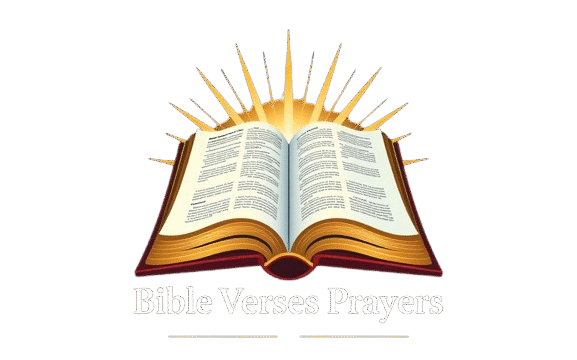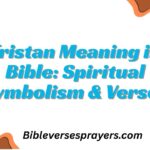Choosing the right Bible translation can feel overwhelming with so many versions available today. Each translation carries a unique style, purpose, and audience, making it important to understand their differences before deciding which one best supports your spiritual journey.
In this guide, we’ll compare 10 popular Bible translations, highlighting their strengths, readability, and accuracy, so you can confidently select the one that deepens your understanding of God’s Word.
A Summary of 10 Bible Translations
This comprehensive comparison examines ten popular Bible translations, analyzing their translation methodology, reading difficulty, target audience, and distinctive characteristics. Each translation serves different purposes, from academic study to casual reading, from children’s ministry to scholarly research.
By understanding the strengths and limitations of each version, readers can select the translation that best aligns with their spiritual goals and comprehension level.
The following analysis includes sample passages, typically from John 3:16-18, to demonstrate how each translation handles the same biblical text. This comparison reveals the practical differences between translation approaches and helps readers understand what to expect from each version.
New International Version (NIV)
For God so loved the world that he gave his one and only Son, that whoever believes in him shall not perish but have eternal life. For God did not send his Son into the world to condemn the world, but to save the world through him. Whoever believes in him is not condemned, but whoever does not believe stands condemned already because they have not believed in the name of God’s one and only Son. – John 3:16-18 (NIV)
The New International Version stands as the most widely used English Bible translation worldwide. Published in 1978, the NIV represents a careful balance between accuracy and readability. The translation team employed a “thought-for-thought” approach while maintaining respect for the original text’s meaning and structure.
Written at approximately a 7th-8th grade reading level, the NIV makes Scripture accessible to most adults without sacrificing scholarly integrity. The translators worked from the best available Hebrew, Aramaic, and Greek manuscripts, incorporating archaeological discoveries and linguistic advances unavailable to earlier translations.
The NIV excels in devotional reading and group Bible studies. Its contemporary language flows naturally, making it particularly effective for public reading and memorization. The translation committee included scholars from various denominations, ensuring theological balance while maintaining evangelical orthodoxy.
English Standard Version (ESV)
For God so loved the world, that he gave his only Son, that whoever believes in him should not perish but have eternal life. For God did not send his Son into the world to condemn the world, but in order that the world might be saved through him. Whoever believes in him is not condemned, but whoever does not believe is condemned already, because he has not believed in the name of the only Son of God. – John 3:16-18 (ESV)
The English Standard Version, published in 2001, represents a formal equivalence approach to biblical translation. The ESV prioritizes word-for-word accuracy over contemporary readability, resulting in a translation that closely follows the structure and vocabulary of the original languages.
Reading at approximately a 10th-grade level, the ESV appeals to readers who value precision and literary quality. The translation maintains much of the formal language structure found in earlier versions while updating archaic terminology that might confuse modern readers.
The ESV serves excellently for serious Bible study, theological education, and expository preaching. Its consistent rendering of key terms throughout Scripture helps readers trace theological concepts across different books. Many seminaries and Bible colleges have adopted the ESV for its reliability in academic settings.
The translation’s strength lies in its commitment to preserving the original author’s intended meaning, even when this results in more complex sentence structures. This approach helps readers engage with the text’s original complexity rather than simplified interpretations.
World English Bible (WEB)
For God so loved the world, that he gave his one and only Son, that whoever believes in him should not perish, but have eternal life. For God didn’t send his Son into the world to judge the world, but that the world should be saved through him. He who believes in him is not judged. He who doesn’t believe has been judged already, because he has not believed in the name of the one and only Son of God. – John 3:16-18 (WEB)
The World English Bible represents a unique approach to biblical translation by being completely free from copyright restrictions. This public domain status makes the WEB particularly valuable for bloggers, authors, and ministry organizations who need extensive biblical quotations without licensing concerns.
Like the ESV, the WEB employs formal equivalence methodology, prioritizing literal accuracy over contemporary readability. The translation team worked to create a version that closely follows the original language structure while using modern English vocabulary.
The WEB’s primary advantage lies in its accessibility for digital ministry and online content creation. Writers can quote extensive passages without worrying about copyright violations or licensing fees. This freedom makes it an excellent choice for websites, apps, and educational materials.
While not as widely recognized as other translations, the WEB maintains scholarly integrity and doctrinal accuracy. Its formal approach appeals to readers who want precise translation without the copyright restrictions that limit other literal versions.
New Living Translation (NLT)
For God so loved the world that He gave His only Son. Whoever puts his trust in God’s Son will not be lost but will have life that lasts forever. For God did not send His Son into the world to say it is guilty. He sent His Son so the world might be saved from the punishment of sin by Him. There is no judgment against anyone who believes in him. But anyone who does not believe in him has already been judged for not believing in God’s one and only Son. – John 3:16-18 (NLT)
The New Living Translation employs dynamic equivalence methodology, prioritizing clear communication over word-for-word literalness. Published in its current form in 2004, the NLT aims to convey the original authors’ intended meaning using contemporary English expressions and sentence structures.
Written at approximately a 6th-grade reading level, the NLT makes Scripture accessible to a broad audience, including young readers and those for whom English is a second language. The translation team focused on clarity and natural flow, often explaining complex theological concepts through expanded phrasing.
The NLT excels in devotional reading and evangelistic contexts where clarity is paramount. Its conversational tone helps readers connect emotionally with biblical narratives while maintaining theological accuracy. Many find the NLT particularly effective for understanding difficult Old Testament passages and complex New Testament teachings.
The translation’s strength lies in its ability to communicate biblical truth in ways that resonate with contemporary readers. However, this approach sometimes requires interpretive choices that may not reflect all possible meanings of the original text.
King James Version (KJV)
For God so loved the world, that he gave his only begotten Son, that whosoever believeth in him should not perish, but have everlasting life. For God sent not his Son into the world to condemn the world; but that the world through him might be saved. He that believeth on him is not condemned: but he that believeth not is condemned already, because he hath not believed in the name of the only begotten Son of God. – John 3:16-18 (KJV)
The King James Version, first published in 1611, holds a special place in Christian history and continues to be beloved by many believers. Commissioned by King James I of England, this translation has influenced English literature and shaped Christian worship for over four centuries.
The KJV’s archaic language, including terms like “begotten,” “believeth,” and “hath,” reflects 17th-century English. While this creates a sense of reverence and tradition for many readers, it also presents comprehension challenges for contemporary audiences, requiring approximately a 12th-grade reading level.
The translation’s literary beauty and poetic rhythm have made many passages memorable and quotable. Phrases like “the valley of the shadow of death” and “faith, hope, and charity” have entered common English usage through the KJV’s influence.
However, modern scholarship has identified limitations in the KJV’s source texts and translation methodology. The translators worked primarily from the Textus Receptus, which was based on relatively few and late Greek manuscripts. Contemporary translations benefit from access to much earlier and more reliable manuscript evidence discovered since 1611.
Good News Translation (GNT)
For God loved the world so much that he gave his only Son, so that everyone who believes in him may not die but have eternal life. For God did not send his Son into the world to be its judge, but to be its savior. Those who believe in the Son are not judged; but those who do not believe have already been judged, because they have not believed in God’s only Son. – John 3:16-18 (GNT)
The Good News Translation, originally published as Today’s English Version, targets readers who need maximum clarity and simplicity. Written at a 4th-6th grade reading level, the GNT serves children, English language learners, and adults who struggle with complex vocabulary or sentence structures.
The GNT employs dynamic equivalence methodology, focusing on conveying meaning rather than preserving original language structures. Translators chose common words over technical terms, often substituting familiar concepts for more abstract theological language.
This translation excels in educational settings, particularly for English as a Second Language (ESL) instruction and children’s ministry. Its clear, straightforward language helps new readers build confidence while learning biblical content. Many find the GNT helpful as a supplementary translation for understanding difficult passages.
The GNT’s primary limitation lies in its simplified vocabulary, which sometimes loses the richness and precision of the original text. For example, the word “blessed” might be rendered as “happy,” which, while understandable, doesn’t fully capture the deeper theological meaning.
Despite these limitations, the GNT serves an important role in making Scripture accessible to those who might otherwise find Bible reading intimidating or incomprehensible.
The Message (MSG)
This is how much God loved the world: He gave his Son, his one and only Son. And this is why: so that no one need be destroyed; by believing in him, anyone can have a whole and lasting life. God didn’t go to all the trouble of sending his Son merely to point an accusing finger, telling the world how bad it was. He came to help, to put the world right again. Anyone who trusts in him is acquitted; anyone who refuses to trust him has long since been under the death sentence without knowing it. And why? Because of that person’s failure to believe in the one-of-a-kind Son of God when introduced to him. – John 3:16-18 (MSG)
The Message, created by Eugene Peterson, represents a complete paraphrase rather than a traditional translation. Peterson, a pastor and biblical scholar, sought to capture the tone and impact that Scripture had on its original audiences, using contemporary American idiom and expression.
Rather than working from original Hebrew and Greek texts in a systematic way, Peterson interpreted biblical passages to communicate what he understood as their essential meaning in modern vernacular. This approach creates highly readable, often striking expressions of biblical truth.
The Message succeeds in making familiar passages feel fresh and immediate. Peterson’s pastoral background and literary skill produce memorable phrases that can illuminate new aspects of well-known texts. Many readers find The Message helpful for devotional reading and personal reflection.
However, The Message’s paraphrase methodology raises concerns about accuracy and authority. Since Peterson interpreted rather than translated, readers encounter his understanding of Scripture rather than direct access to the biblical authors’ words. This approach can be valuable for gaining new perspectives but shouldn’t replace careful study of more literal translations.
The Message works best as a supplementary resource for gaining fresh insights into familiar passages rather than as a primary Bible for systematic study or doctrinal instruction.
New American Standard Bible (NASB)
The New American Standard Bible represents one of the most literal English translations available. First published in 1971 and updated in 1995 and 2020, the NASB prioritizes formal equivalence, maintaining the structure and word order of original languages whenever possible in English.
Reading at approximately an 11th-grade level, the NASB appeals to serious Bible students who want precise translation even at the cost of smooth readability. The translation attempts to render each Hebrew and Greek word consistently throughout Scripture, helping readers track key theological terms.
The NASB excels in detailed Bible study, theological research, and cross-reference work. Its literal approach makes it valuable for understanding the structure of biblical arguments and the flow of thought in complex passages. Many pastors and teachers prefer the NASB for sermon preparation and theological study.
However, the NASB’s commitment to literalness sometimes produces awkward English expressions that can hinder comprehension for casual readers. The translation prioritizes accuracy over contemporary communication, making it less suitable for devotional reading or public worship.
Christian Standard Bible (CSB)
The Christian Standard Bible, published in 2017, attempts to balance accuracy and readability through what translators call “optimal equivalence.” This methodology seeks the most accurate translation possible while maintaining clear, contemporary English communication.
Written at approximately an 8th-grade reading level, the CSB aims to be both precise and accessible. The translation team included scholars from various evangelical backgrounds, ensuring theological balance while maintaining conservative biblical interpretation.
The CSB performs well in both study and devotional contexts. Its balance of accuracy and readability makes it suitable for personal study, small group discussions, and public reading. The translation incorporates recent archaeological discoveries and manuscript evidence while maintaining doctrinal reliability.
The CSB’s strength lies in its attempt to avoid the extremes of overly literal or overly interpretive approaches. This middle path appeals to readers who want accuracy without sacrificing contemporary clarity.
New Revised Standard Version (NRSV)
The New Revised Standard Version, published in 1989, represents an update of the Revised Standard Version with attention to inclusive language and contemporary scholarship. The NRSV employs formal equivalence methodology while incorporating gender-inclusive language where the original text permits.
Reading at approximately a 10th-grade level, the NRSV appeals to academic and mainline Protestant contexts. The translation committee included scholars from various Christian traditions, creating a version that reflects broad scholarly consensus on textual and translation issues.
The NRSV excels in academic study and interfaith dialogue due to its scholarly approach and inclusive language. Many universities and seminaries use the NRSV for biblical studies courses because of its balance between accuracy and contemporary sensitivity.
However, the NRSV’s inclusive language choices and scholarly approach may not appeal to readers who prefer traditional language or more conservative theological perspectives. Some evangelical readers find the translation’s interpretive choices inconsistent with their theological convictions.
Conclusion
Choosing the right Bible translation depends on your specific needs, reading level, and study goals. For devotional reading and general study, translations like the NIV, NLT, and CSB offer excellent balance between accuracy and readability. For serious theological study, the ESV, NASB, and NRSV provide more literal approaches that preserve original language structures.
New believers and young readers often benefit from the clarity of the GNT or NLT, while mature students may prefer the precision of the ESV or NASB. Those involved in digital ministry might appreciate the copyright-free status of the WEB, while readers seeking fresh perspectives might find value in The Message as a supplementary resource.






